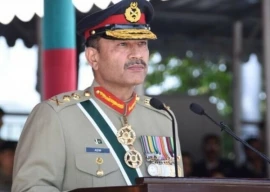
The unique construction of Hunza homes, with only a single central room housing on average five to seven people, makes the influx of new persons especially problematic. People complain of extremely poor facilities at the 18 camps set up for the displaced. These issues too need to be addressed practically and with sensitivity.
For the future the focus must also be on rehabilitating people. It is unclear if submerged villages can be rescued or areas prone to landslides made safer. But experts need to be called upon to look at these questions, so that in the weeks ahead a plan for the displaced people of Hunza can be worked out with their active participation as well as that of the NGOs and development organisations that work there.
Published in the Express Tribune, May 23rd, 2010.


1731570357-0/elon-musk-(1)1731570357-0-165x106.webp)








1732012115-0/Untitled-design-(14)1732012115-0-270x192.webp)
1736844405-0/Express-Tribune-(2)1736844405-0-270x192.webp)










COMMENTS (2)
Comments are moderated and generally will be posted if they are on-topic and not abusive.
For more information, please see our Comments FAQ